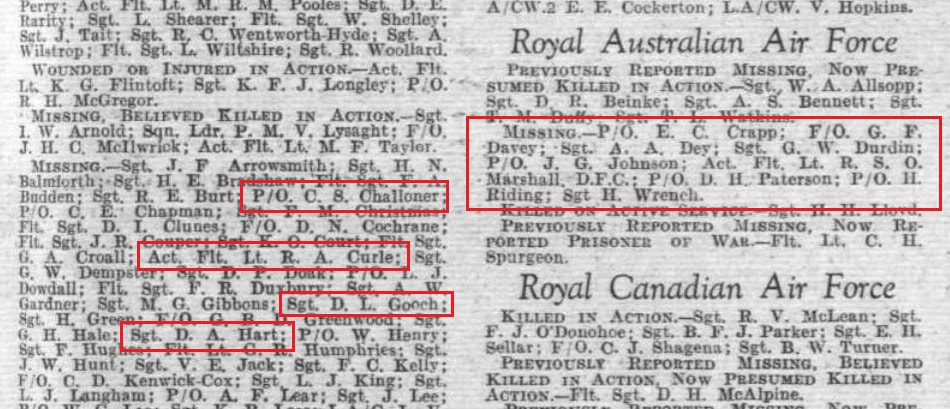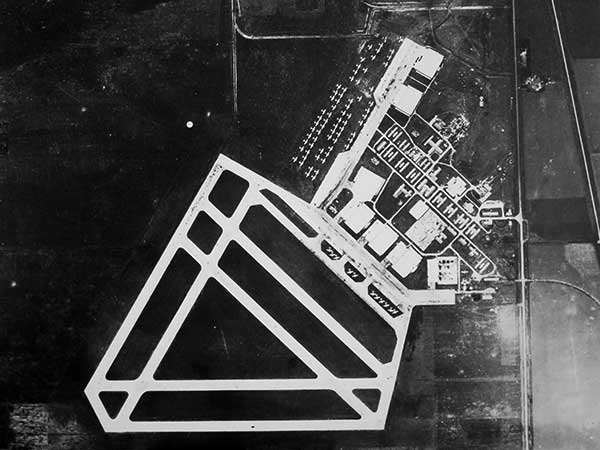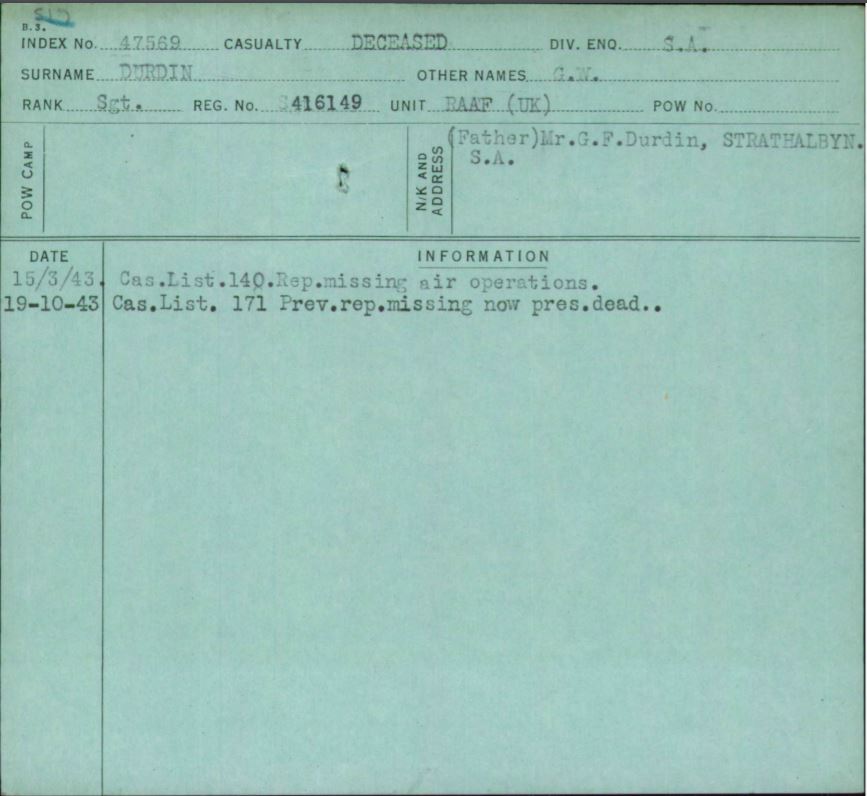|
I came across Arthur Adams' account of being shot down by a flak ship in the Bay of Biscay - it's definitely worth a read. Thought to be "a piece of cake...", gardening ops were incredibly dangerous as the bomber had to fly low and maintain an accurate and steady course for the navigator and bomb aimer to 'sow' their mines accurately.
The Gironde Estuary had anti-aircraft batteries and flak ships on it and I've wondered if these caused the disappearance of ED559.
3 Comments
I had always assumed from the records (100 Squadron ORB and the Air Ministry form 78) that ED559 arrived at RAF Grimsby on 8 February 1943. This is the date that the records show the aircraft as 'Taken on Charge'.
However, I recently emailed the AVRO Heritage Museum in Manchester (located on the former site of Woodford airfield). Harry Holmes replied to my request and from their records ED559 left Woodford on 3 February. It would have arrived the same day. So there is now a little oddity regarding arrival and being 'Taken on Charge'. Harry also sent me the full delivery dates for all of 100 Squadron's Lancasters - the 16 plus two reserve. There was no information about the pilot delivering the Lanc but in all likelihood it was an ATA pilot. 29 Jan - ED521, ED525, ED555, ED557 (ED521 had to land at RAF Holme-on-Spalding Moor, en route. No details as to why.) 30 Jan - ED536, ED544, ED553 1 Feb - ED540, ED549, ED560, ED562 2 Feb - ED556, ED561, ED563, ED568 3 Feb - ED559 6 Feb - ED587 11 Feb - ED609 The squadron at Grimsby already had some Lancasters on roster - mainly Lancaster Is - but I assume that the 16 newly arrived Lancs were for the upcoming operations. I assume that the older aircraft were redistributed back to others squadrons/held as reserve. As part of Casualty Communique No. 224, the crew of Lancaster ED559 are recorded as Missing in the 29 April 1943 edition of Flight magazine. In the 27 Januay, 1944 edition of the same magazine, Casualty Communique No. 335, mentions the crew as now "Previously Reported Missing, Now Presumed Killed in Action."
Richard Curle's service records show he was a member of No. 33 SFTS from late January 1942. As part of the Commonwealth Air Training Plan, it was here that Richard flew.
The airfield consisted of six paved runways were supplemented by two relief fields at Oberon. Training aircraft consisted of Harvards and Ansons. For more details see Historic Sites of Manitoba. I came across three casualty cards for the Australian crew on-board ED559. Each image links to the copyright holder, the Museum of Melbourne.
|
AuthorAs and when information is found I'll post to this blog. Archives
November 2023
Categories |
- About ED559
- The Crew
- Building ED559
- RAF Grimsby (Waltham)
- 100 Squadron
- The Target
- The Lost
- Remembering ED559
-
Research about ED559
- Caterpillar Club
- Lancaster loss card
- Crew memorials
- F/Lt Richard A Curle RAFVR Record of Service
- Harry Riding's Flying Log Book - 1942/43
- Letter from Wing Commander J.G. Swain
- Night Bomber Report
- Guy Normandin
- German defences in the Gironde
- RAF Gardening Operations during the Second World War
- Pilot Officer Robert Herbert Chapman
- About me
- Links
- Contact
- Blog
- Wheel







 RSS Feed
RSS Feed